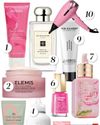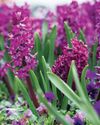
Britain’s countryside is like a natural medicine cabinet, abundant with plants that can help treat disease and even save lives. During World Wars One and Two, when medical supplies ran frighteningly low, the nation turned to foraging for wild herbs and plants to make vital medicines.
Plants to the rescue
In peacetime, Britain imported most of its medicines from Europe. But World War One disrupted supply chains, holding up drug shipments. The Government looked to medicinal herbs to fill the gap, and for the public to collect them for use by pharmaceutical companies. It made a list of ‘most wanted’ plants, including sphagnum moss, which made sterile, antibacterial and absorbent wound dressings for injured soldiers. Women, children and the elderly rallied to the cause – one person alone filled 5,000 sacks from Dartmoor in just five months! By the end of the war, military hospitals were receiving around one million of these life-saving dressings a month.
Green allies
Other valuable herbs included meadow saffron, to reduce inflammation and treat gout, and stinging nettles, used in asthma drugs and to dye camouflage. Deadly nightshade (Atropa belladonna) was also sought after, but only adults were allowed to collect this highly toxic plant. Once processed, it was used in eye operations and as an antidote for gas poisoning. A known sedative, valerian helped reduce anxiety and insomnia in civilians (it was an ingredient in ‘nerve pills’), and was also prescribed to shell-shocked infantrymen.
County Herb Committees
This story is from the {{IssueName}} edition of {{MagazineName}}.
Start your 7-day Magzter GOLD free trial to access thousands of curated premium stories, and 9,000+ magazines and newspapers.
Already a subscriber ? Sign In
This story is from the {{IssueName}} edition of {{MagazineName}}.
Start your 7-day Magzter GOLD free trial to access thousands of curated premium stories, and 9,000+ magazines and newspapers.
Already a subscriber? Sign In

10 OF THE BEST Buys for CHARITY
Look great and support Breast Cancer Awareness Month this October

How to HAGGLE
Save those £££s by plucking up the courage to negotiate

Your wellbeing
LATEST HEALTH SOLUTIONS FOR YOUR MIND AND BODY

Here to help
LET COUNSELLOR KEREN LIGHTEN YOUR LOAD

Good to GLOW
Plant your bulbs now for a lovely bright start to spring

Painted VASES
Prettify empty jars and bottles with this quick craft project

Escape to OXFORD
Delve into the city's rich cultural heritage for a wonderful weekend

Sail through menopause WITHOUT WEIGHT GAIN!
Middle-aged spread may seem inevitable - but it really doesn't have to be

Woodland wonders
When you go down to the woods, you'll find a whole new world teeming with life

'We should all be dancing'
Singer and actor Toyah Willcox on overcoming adversity, ageing and Strictly Come Dancing